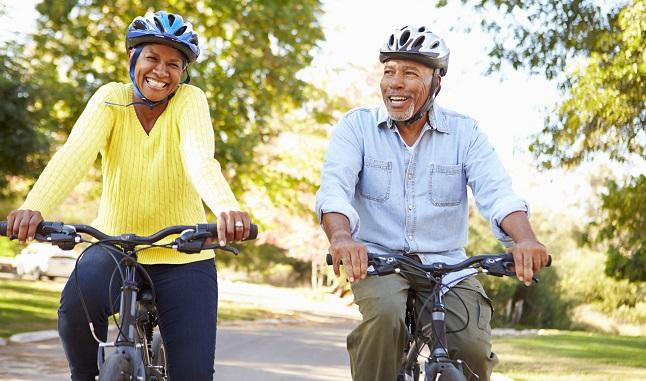‘Just Move’: Registry Study Shows Positive CV Effects of Light Physical Activity in Older Adults
It is important for healthcare workers to encourage sedentary and inactive patients to engage in physical activity, regardless of intensity, authors say.

Even light physical activity and a greater emphasis on being less sedentary can be enough to improve cardiovascular disease risk, according to findings from a new study of British 60- to 64-year-olds.
“The 60 to 64 age range represents an important transition between work and retirement, when lifestyle behaviors tend to change,” study author Ahmed Elhakeem, PhD (University of Bristol, England), said in a press release. “It may, therefore, be an opportunity to promote increased physical activity.”
For the study, published online today in the Journal of the American Heart Association, the team looked at data from 795 men and 827 women enrolled in the Medical Research Council National Survey of Health and Development who wore heart rate and movement sensors for 5 consecutive days. Participants also underwent fasting blood tests that looked at inflammatory, endothelial, and adipokine biomarkers.
A greater amount of time spent in light and moderate-to-vigorous physical activity as well as less sedentary time were linked with more favorable biomarker levels. Women saw greater differences for C-reactive protein, interleukin-6, and leptin compared with men.
“The findings also suggest that increased sedentary time may be adversely related to endothelial function as indicated by its relation to these same markers, including to interleukin-6, t-PA, and leptin independently of moderate-to-vigorous physical activity,” the authors write in their paper. “Their association with these biomarkers might mediate effects of physical activity and sedentary time on structural cardiovascular remodeling, and these effects might be more apparent in those with vascular disease.”
Additionally, fat mass only partly mediated the associations between physical activity and biomarker levels, and in general this was greater in women than in men. Given this, “adiposity may not be the only route through which physical activity benefits cardiovascular health, and this is consistent with studies showing persisting associations after adjustment for body size,” Elhakeem and colleagues say.
“Our findings suggest that it is important for sedentary and inactive older adults to be supported to replace time spent sedentary with any intensity of physical activity,” they conclude.
What was “particularly new and surprising” about this study was that they found that even light intensity physical activity was linked to more favorable heart disease biomarkers, said exercise physiologist Keith Diaz, PhD (Columbia University Irving Medical Center, New York, NY), who was not involved in the study.
You can't necessarily change the past, but you can certainly change your heart's future by adopting a healthy lifestyle and by adopting exercise no matter what age you are. Keith Diaz
“Getting people to move in general has proved challenging, and I think people have this notion that to get the benefits of activity, ‘I have to go to the gym and exercise and go all out. No pain, no gain.’ And I think this message just underscores [the idea] ‘Just move, go out for a walk—it doesn't matter how long and how intense. Just move as much as you can,’” he told TCTMD.
Some may see the researchers’ selection of only 60- to 64-year-olds as a limitation, Diaz said, but “I also think that's a really important critical piece of this study. A lot of the literature on exercise and the underlying reasons why exercise can reduce your heart risks or biomarkers [has] mostly been in younger adults who are without any disease. And so this is actually an important study because it demonstrates that these associations, these links to these better biomarkers of health, still persist so that a person that's older still gets the benefits that we particularly have seen in the younger adults.”
Even for adults older than the study population, “it's never too late to start exercise,” said Diaz. “If you've never exercised a day in your life and you start when you're 80 years old, you're still going to reap some of the benefits. Now, you may not reap all of the benefits of someone who has exercised their entire life. You can't necessarily change the past, but you can certainly change your heart's future by adopting a healthy lifestyle and by adopting exercise no matter what age you are.”
Yael L. Maxwell is Senior Medical Journalist for TCTMD and Section Editor of TCTMD's Fellows Forum. She served as the inaugural…
Read Full BioSources
Elhakeem A, Cooper R, Whincup P, et al. Physical activity, sedentary time, and cardiovascular disease biomarkers at age 60 to 64 years. J Am Heart Assoc. 2018;Epub ahead of print.
Disclosures
- Elhakeem and Diaz report no relevant conflicts of interest.


Comments